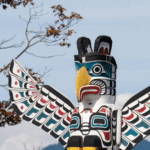Suppose you’ve been approved for permanent residency through the Rural Community Immigration Program (RCIP), congratulations! This program provides an incredible opportunity to settle in Canada’s rural and northern communities, contributing to their growth and development. However, securing approval is just one part of the journey. What happens next? In this blog, we’ll guide you through the essential steps you need to take after being approved for permanent residency through RCIP.
1. Receive Your Confirmation of Permanent Residency (COPR)
Once you’re approved, you will receive your Confirmation of Permanent Residency (COPR). This document confirms your status as a permanent resident of Canada. It will include:
- Your personal information (name, date of birth)
- Passport number
- Effective date of your permanent residency status
Be sure to double-check all information on the COPR. If you find any errors, it’s essential to notify Immigration, Refugees and Citizenship Canada (IRCC) promptly to prevent any delays.
2. Complete the Landing Process in Canada
With your COPR in hand, the next crucial step is landing in Canada. This means you officially enter Canada as a permanent resident.
Upon arrival at a Canadian border (airport, land, or sea entry point), a Canada Border Services Agency (CBSA) officer will verify your COPR and passport to ensure everything is in order. During this process, you will be asked to confirm that you are intending to settle in the rural community that nominated you under RCIP and that you have sufficient funds to support yourself and your family.
Once everything is verified, the officer will approve your permanent residency, and you may receive your Permanent Resident Card (PR Card). The PR Card is essential for identification and will be necessary for international travel.
3. Apply for Your Health Card and Social Insurance Number (SIN)
After landing, you’ll need to take care of some key administrative tasks to integrate into Canadian society:
- Health Card: Apply for a Health Card with your provincial or territorial health authority. This ensures you’re covered under Canada’s public health care system.
- Social Insurance Number (SIN): Your SIN is necessary for working in Canada, accessing government services, and filing taxes. You can apply for a SIN online or in person at a local Service Canada office.
4. Settle in Your Designated Rural Community
As part of the RCIP, you are required to settle in the designated rural or northern community that nominated you. These communities are eager to benefit from the skills and expertise that newcomers bring to the table.
Here’s what you should focus on when you arrive:
- Find housing: Whether renting or buying, start by understanding the local housing market and securing your first place.
- Connect with settlement services: Many rural communities offer settlement services to help immigrants adapt. These services often include language programs, job search assistance, and information about Canadian culture and society.
- Look for employment: If you don’t already have a job lined up, start your search in the local market. Many rural areas offer opportunities in various sectors, including agriculture, trades, healthcare, and technology.
5. Fulfill Your Residency Obligation
A key aspect of the RCIP is that you must reside in the designated rural community for at least one year after arriving in Canada. This is to ensure that immigrants contribute to the local community’s growth and success. Failing to meet this requirement could jeopardize your permanent resident status.
Ensure you track your time in Canada and remain committed to your community.
6. Permanent Resident Card (PR Card) Renewal
As a permanent resident, you will receive a PR Card. This card serves as your official proof of permanent residency and is required for international travel. It is generally valid for five years, and you will need to apply for a renewal if you plan to travel outside Canada.
To be eligible for PR Card renewal, you must meet the residency obligation of living in Canada for at least two years out of every five years. Be sure to maintain the required residency days to keep your status active.
7. Citizenship Eligibility
After living in Canada for at least three years (1,095 days) as a permanent resident, you may be eligible to apply for Canadian citizenship. While citizenship is not mandatory, it comes with additional benefits such as the right to vote, run for public office, and hold a Canadian passport.
8. Maintain Your Permanent Residency Status
It’s essential to maintain your permanent residency status by adhering to Canada’s residency requirements. You must have lived in Canada for at least two years within any five years to maintain your PR status. Not fulfilling these obligations can result in losing your permanent resident status.
Conclusion
Receiving approval for permanent residency through the Rural Community Immigration Program (RCIP) is a significant milestone. However, this is just the beginning of your new life in Canada. From landing at the border to settling in your community, there are essential steps you must take to integrate and thrive fully.
At Change of Phase Consulting Group, we recognize that navigating the immigration process can be a challenging task. Our team is here to guide you through each step, offering expert advice and support to ensure a smooth transition to your new life in Canada. If you require assistance with any aspect of the RCIP or your settlement process, please do not hesitate to contact us. We’re here to help!
Ready to Begin Your Journey to Permanent Residency?
If you’re considering applying for permanent residency through RCIP or have any questions about the process, contact Change of Phase Consulting Group today! Let us help you make the transition to your new life in Canada as smooth and seamless as possible.










Leave A Comment